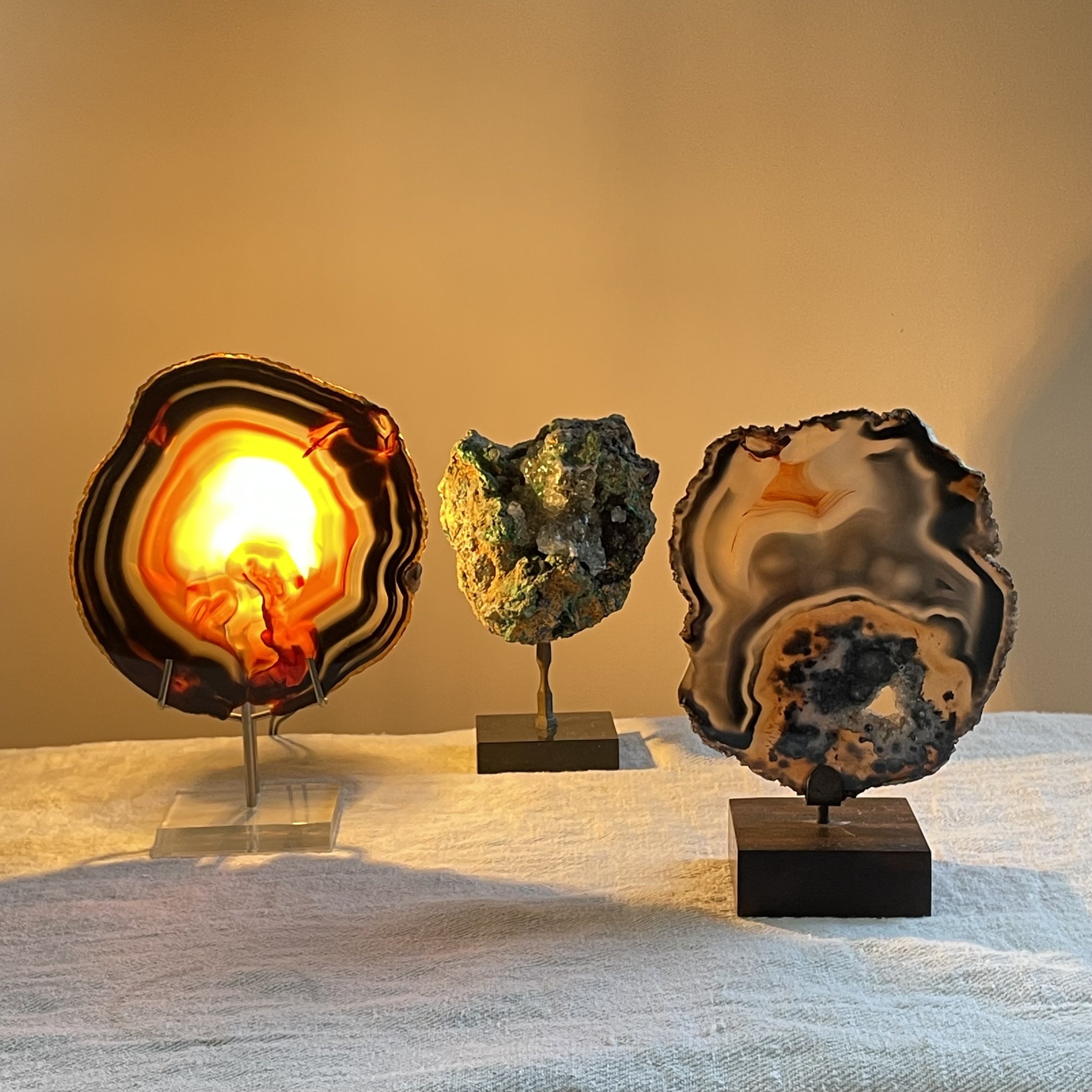Paire de lanternes Andon, Japon









Paire de lanternes Andon, Japon
Paire de lanternes en papier washi bois et bambou, Andon
Japon
Ère Showa/ Epoque moderne
H 47 x L 18 x 0 18 cm
Bon état général, légères rousseurs du papier
Pair of washi wood and bamboo lanterns, And on
Japan Showa Era/ Modern period
H 47 x W 18 x 0 18 cm
Good condition, slight fading of the paper
Le papier washi a servi pendant des millénaires à diverses fonctions : du papier pour écrire, dessiner “kami” au papier tendu pour servir de cloison “shoji”, ou de filtre diffusant la lumière des lanternes “chochin, andon”, des lampes à structure de bois, de bambou “akari” mais aussi des éventails “uchiwa”.
Ce papier est composé à partir de trois plantes parmi lesquelles, le mûrier à papier et il est exclusivement naturel, sans produit chimique de stabilisation. Il est résistant à l’eau, aux insectes et conserve une rigidité très appréciée, après avoir été mis en forme.
Les branches des plantes sont cuites dans l’eau, leur écorce en est alors extraite afin d’être battue pour former des filaments. Ceux-ci sont mélangés à une matière collante provenant de la racine d’un plante, l’ensemble est filtré puis posé en couche fine et régulière sur des cadres avec tamis sur lesquels la matière se répartit grâce au mouvement de va-et-vient suivi d’une phase de séchage. Chaque atelier de papier a ses spécificités, les couleurs dépendent des matières premières. Et l’usage demeure important aujourd’hui dans toutes les provinces du Japon.
Par ses caractères de résistance et durabilité, ce savoir-faire pluri millénaire a été inscrit au patrimoine mondial de l’Unesco depuis bientôt dix ans.
Lorsque ce papier sert à tamiser la lumière d’une lanterne dont la flamme serait un point de lumière très direct, on ne peut que penser au fameux intérêt de l’auteur Junichiro Tanizaki vantant cette attention particulière et ce goût très précisément wabi sabi pour une lumière douce a contrario de la lumière électrique dont il voit l’apparition à l’époque de la publication de ce texte.
La modernité n’arrive jamais sans heurts et modifie profondément les habitudes de vie, les modes d’observation et d’appréhension de l’espace domestique en l’occurrence.
Installation de chôchins, exposition As movable as Butterflies, MADD Bordeaux, 2019© Mathieu Peyroulet
Washi paper has been used for thousands of years for various functions: from paper for writing and drawing "kami" to paper stretched to serve as a partition "shoji", or as a filter for diffusing the light of lanterns "chochin, andon", lamps with a wooden or bamboo structure "akari" and also fans "uchiwa".
This paper is made from three plants including the paper mulberry tree and is exclusively natural, without any stabilizing chemicals. It is resistant to water and insects, and retains a much-appreciated rigidity after being shaped.
The branches of the plants are boiled in water, the bark is then extracted and beaten to form filaments. These are mixed with a sticky material coming from the root of a plant, the whole is filtered then put in fine and regular layer on frames with sieves on which the material is distributed thanks to the back and forth movement followed by a drying phase. Each paper workshop has its own specificities, the colors depend on the raw materials. And the use remains important today in all the provinces of Japan.
Because of its characteristics of resistance and durability, this multi-millennial know-how has been registered as a Unesco World Heritage Site for almost ten years.
When this paper is used to filter the light of a lantern whose flame would be a very direct point of light, we can only think of the famous interest of the author Junichiro Tanizaki praising this particular attention and this taste very precisely wabi sabi for a soft light in contrast to the electric light which he sees the appearance at the time of the publication of this text.
Modernity never arrives without a clash and profoundly modifies the habits of life, the modes of observation and apprehension of the domestic space in this case.











